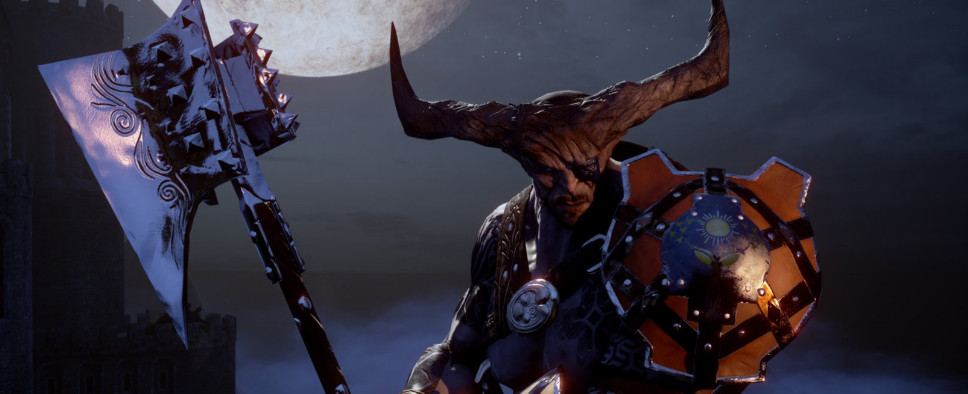Dragon Age: Inquisition - Trespasser "Building to an Emotional Theme" GDC Presentation Reports
-
Category: News ArchiveHits: 2285

Dragon Age lead writer Patrick Weekes and lead narrative designer John Epler recently gave a presentation at GDC about the process they used to "develop the core narrative and thematic moments" in the epilogue DLC for Dragon Age: Inquisition, Trespasser.
While GDC talks tend to be mostly directed at members of the industry, this is the kind of subject that I imagine many fans of the company and the game would be interested in, so it's good to know that at least a couple of outlets were present in some capacity and have some reports to offer.
Polygon focuses on the two works that were used as goalposts and guides by the writers while working on certain narrative aspects of the DLC, Raiders of the Lost Ark and Captain America: The Winter Soldier:
As with nearly everything at the annual Game Developers Conference, the talk was aimed at fellow game makers. Weekes and Epler had advice to give: Setting thematic visions early and referring to them often can help the final product in innumerable ways.
Those visions should be well known, they said. They should be easily recognizable. They should be intuitive, so that everyone involved can easily understand how it relates to the project.
Setting a shared vision took on perhaps extra importance, given the scope of Trespasser's mandate.
The story of Dragon Age: Inquisition was about the player character's journey their rise to power. Trespasser effectively undoes that. It concludes the story of a an institution the titular Inquisition. Those two halves made a whole. It was their job, in short, to end Dragon Age: Inquisition.
The pair used a unifying vision that grounded the developers in something beyond the story they were writing and directing.
While Gamasutra focuses more on the process used by the writers:
The talk was meant to teach devs and aspiring devs about their tripartite process at BioWare for producing narrative content: Setting a vision, accepting critique, and engaging in revision, repeating as necessary. This is hardly news to any writer, whether in gaming or not; this process is just baked into the work we do, even if we sometimes struggle with that second bit. But it was the way they defined these boilerplate concepts that was both unique and entertaining.
(Vision,) in their view, is a cynosure for the entire team that keeps them focused on a single goal; in the case of Bioware's narrative design team, it was the idea that Trespasser should do two things, 1) effectively end the Inquisitor's story and resolve the issue with the glowing mark on their hand, 2) tie off the loose end of Solas' story, and tell a tale where this erstwhile friend (and, perhaps, lover) had become an antagonist. In this, so far as I'm concerned, they were singularly effective; they provided a throughline for the DLC that kept me going over the course of its hours-long adventure.
The amusing bit of their (vision) talk was that, for them, vision is in part about accepting and using influences from pop culture to set a particular tone. As they put it, your inspiration/pop-culture reference doesn't need to be .ood' or from (high culture,) the Mass Effect: Citadel DLC's inspiration was (Air Force One Meets Face-Off,) which guided a DLC where the action was about Commander Shepard fighting a clone of themselves that tried to steal the Normandy.

